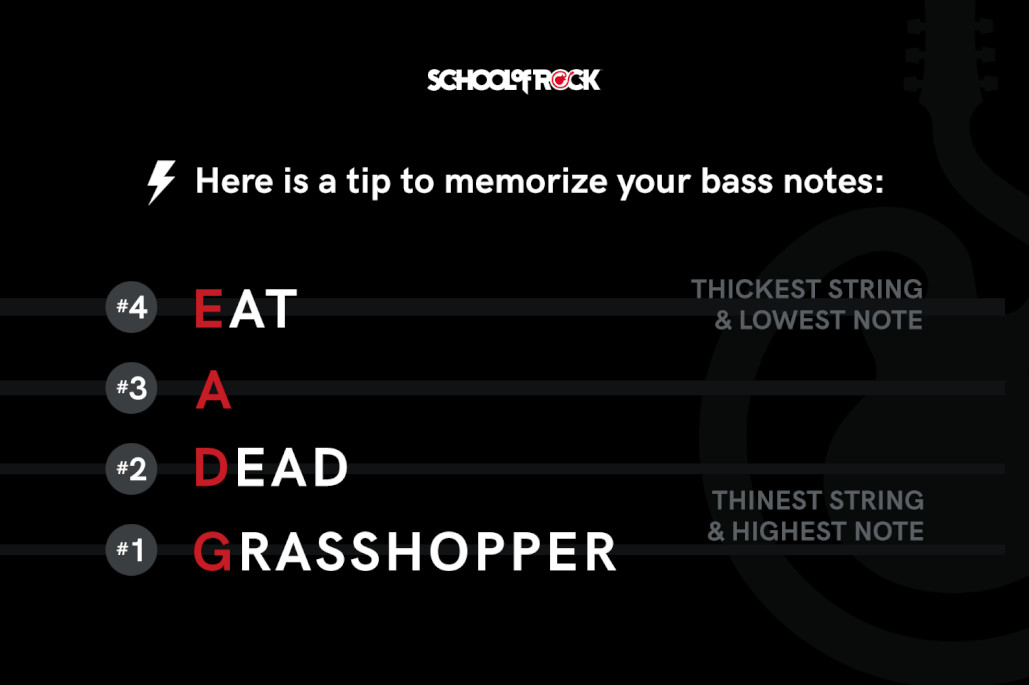Getting started with the Bass Bass Guitar? One of the very first and most crucial skills you’ll need to master is tuning. It doesn’t matter how skilled you become, an out-of-tune bass guitar will never sound quite right. Regular practice is key to improving your bass playing, and ensuring your bass is correctly tuned will make those practice sessions far more enjoyable and productive. Especially if you’re jamming with others, proper bass guitar tuning is essential for a harmonious sound. Thankfully, tuning your bass guitar is easier now than ever before, and keeping it in tune is absolutely achievable.
Understanding the Basics of Bass Guitar Tuning
Let’s familiarize ourselves with the fundamental components involved in tuning a bass. The tuning pegs, located on the headstock of your bass bass guitar, are what control the string tension and therefore the pitch. Turning these pegs will either tighten or loosen the strings. Tightening a string increases its pitch, making the note higher, while loosening a string lowers the pitch, making the note flatter.
How Often Should You Tune Your Bass Guitar?
The best practice is to tune your bass guitar every single time you plan to play it. Don’t assume your bass will remain perfectly in tune between sessions. While basses generally hold their tuning better than standard guitars due to their string gauge and construction, it’s still vital to check your tuning before each playing session.
If things sound a bit off during your practice, or if you notice your bass clashes with recordings or other instruments, it’s time to verify your standard tuning for your bass guitar. A quick tune-up can make a world of difference to your sound and your practice experience.
 Close up of bass guitar headstock and tuning pegs
Close up of bass guitar headstock and tuning pegs
Methods for Tuning Your Bass Guitar
There are two primary methods for achieving accurate bass guitar tuning:
- Tuning by Ear: This method involves using a “reference note” from a reliable source, such as another tuned instrument, a tuning fork, or a pitch pipe. You then adjust your bass strings to match this reference pitch by ear.
- Utilizing an Electronic Tuner: Electronic tuners, especially clip-on tuners, have become incredibly popular and convenient for bass guitar tuning. These devices offer a visual and often very precise way to tune your instrument.
Tuning with a Clip-On Electronic Tuner
Clip-on tuners have truly revolutionized the process of bass guitar tuning. Unlike older electric tuners that required plugging in your instrument, clip-on tuners attach directly to your bass’s headstock. They work by sensing the vibrations of the strings and displaying whether your bass guitar notes are “flat” (too low), “sharp” (too high), or perfectly in tune.
When selecting a clip-on tuner, particularly for a bass, check if it’s capable of accurately registering the low E string (the lowest note on a standard 4-string bass). Some tuners can struggle with these lower frequencies. However, many modern tuners are designed to handle the full range of a bass guitar. These tuners are generally affordable, user-friendly, and provide a highly accurate bass guitar tuning experience. Many bass practice amplifiers even include built-in tuners for added convenience.
Tuning Your Bass Guitar Without a Dedicated Tuner
Even without a dedicated electronic or clip-on tuner, you have several effective options for tuning your bass bass guitar:
Using a Tuner App on Your Smartphone or Tablet
The app stores are filled with tuner applications for mobile devices, and many of them are available for free. These apps utilize your device’s built-in microphone to detect the pitch of your bass strings. As you adjust the tuning pegs, the app’s display will indicate when each bass guitar string reaches the correct pitch. These apps are a readily accessible and convenient way to achieve accurate bass guitar tuning.
Employing Another Instrument as a Reference Pitch
You can also tune your bass guitar by using a reference pitch from another instrument that you know is accurately tuned, such as a piano or a keyboard. This method requires a little more practice and a good ear, as you’ll be tuning one of your strings to the reference pitch “by ear.” This involves carefully listening to the reference pitch, playing the corresponding note on your bass, and comparing the two pitches.
Adjust the tuning peg of your bass string until its pitch perfectly matches the reference pitch. Once you have one string accurately tuned, you can then tune the rest of your bass strings relative to that first string. This is done by playing a fretted note on a lower string and then tuning the open string above it to match that fretted note (we’ll explain this further in the standard tuning section).
Essential Bass Guitar Tunings to Know
Standard Bass Guitar Tuning
 Diagram of standard bass guitar tuning EADG
Diagram of standard bass guitar tuning EADG
If you’re learning on a standard bass guitar, you’ll notice it typically has 4 strings. The standard bass guitar tuning for a 4-string bass is E, A, D, and G. This is the same as the four lowest strings on a standard 6-string guitar, but tuned one octave lower, giving the bass its deeper sound. The strings of a bass guitar in standard tuning are tuned in intervals of perfect fourths.
 Mnemonic device for remembering bass string notes EADG – Eat A Dead Grasshopper
Mnemonic device for remembering bass string notes EADG – Eat A Dead Grasshopper
A helpful mnemonic to remember the bass guitar notes in standard tuning is “Eat A Dead Grasshopper” (E-A-D-G).
5-String Bass Guitar Tuning
5-string basses are becoming increasingly popular, offering an extended lower range. The most common 5-string bass guitar tuning is achieved by adding an extra low string, tuned to B. This results in the tuning: B, E, A, D, G. Alternatively, some 5-string basses are tuned with a high C string instead of a low B, resulting in E, A, D, G, C. Unlike standard guitars which have one major third interval between the G and B strings, bass tunings predominantly use perfect fourths between all strings, ensuring consistent finger patterns across the fretboard.
6-String Bass Guitar Tuning
For bassists seeking an even wider tonal palette, the 6-string bass guitar is an excellent choice. 6-string bass guitar tuning expands the range in both directions, adding both a low B string and a high C string. The standard 6-string bass tuning is: B, E, A, D, G, C.
Drop D Tuning for Bass Guitars
There are also straightforward methods to broaden your bass’s sonic capabilities without adding extra strings. Drop tunings gained significant traction in the 1990s, particularly within heavier music genres. Drop tuning involves lowering the pitch of your lowest string, typically by a whole step below standard tuning.
What is Drop D Tuning?
Drop D tuning on a bass guitar is achieved by lowering the E string (in standard EADG tuning) down a whole step to D. This makes the lowest note a D instead of an E. In Drop D tuning, the bass guitar notes become D, A, D, G. This creates a lower, heavier sound and expands the bass’s tonal range downwards, often favored in rock and metal music. The D string then becomes a fifth below the A string, changing the interval on the lowest strings.
Tips for Drop D Tuning
Drop D tuning is exceptionally popular, especially in genres like rock and metal: D, A, D, G.
Some metal bands even take this further, tuning down to Drop C: C, G, C, F, and even Drop B: B, F#, B, E for an incredibly heavy and low sound.
Drop D Tuners
For situations requiring frequent switching between standard tuning for a bass guitar and drop tunings, specialized Drop D tuners can be incredibly useful. These devices are installed on the bass and allow you to instantly switch your E string to D and back again with the flick of a lever, without needing to use an electronic tuner or retune manually. This is particularly helpful in live performance settings.
Maintaining Your Bass Guitar Tuning for Longer
Once your bass guitar is perfectly in tune, here are three key steps to help keep it in tune for longer periods:
-
Regularly Change Your Strings: Bass strings, like all strings, lose their vibrancy and tuning stability over time. Change your bass strings when they start to sound dull or become difficult to keep in tune. When you install new strings, remember to stretch them properly. You can do this by gently pulling upwards on the strings (being careful not to pull too hard and break them) or by simply playing the bass for a short period. Due to their heavier gauge, bass strings are generally more stable than guitar strings and therefore easier to keep in tune. Bass strings also tend to last longer than guitar strings. If you play frequently and prefer a bright tone, you might change your strings monthly. However, many bassists find that bass strings can last for several months before needing replacement.
-
Keep Your Bass Clean: Dirt, oils, and grime can contribute to string corrosion and tuning instability. Make it a habit to wash your hands before playing your bass bass guitar and wipe down the strings with a clean cloth after each playing session. This simple routine will help prolong string life and maintain tuning.
-
Protect Your Bass in its Case: When you’re not playing, store your bass guitar in its case or gig bag. This protects it from environmental factors like dust, humidity, and temperature fluctuations. Avoid exposing your bass to extreme changes in temperature or humidity, as these can significantly affect tuning stability and even the instrument’s structure over time.
Whether you prefer the precision of an electronic tuner or the traditional method of tuning by ear, following these straightforward steps will ensure your bass guitar is in tune, stays in tune, and provides a much more enjoyable and rewarding playing experience.
Ready to Rock with Bass Lessons from School of Rock
Now that you’ve grasped the essentials of bass guitar tuning, you’re well-prepared to embark on the next exciting stage: learning to play the bass! Just like the iconic bassists who came before you, you too can master this instrument. School of Rock offers a comprehensive range of bass lessons designed to guide you through every step of learning, tailored to beginner, intermediate, and even advanced levels. Discover your inner bassist and unleash your musical potential with School of Rock today!
Is your electric guitar also out of tune? Check out our Beginner’s Guide to Tuning a Guitar!
